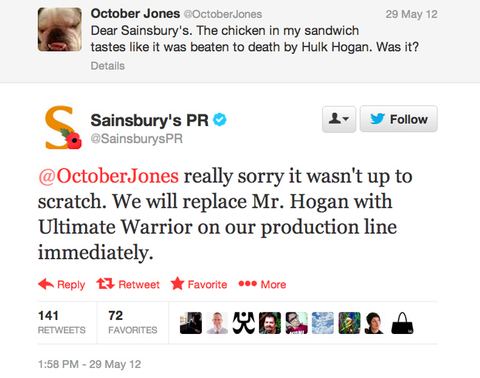How brands can respond to trolls on social media
- Crisis Shield
- Apr 26, 2019
- 4 min read
Updated: Jul 23, 2019
By Michelle Wang and James Fitzpatrick

Social media provides a platform for businesses to engage with their customers in conversation. It is also increasingly used as a platform for customer support, with businesses providing responses to customer complaints and enquiries. When done right, ongoing online engagement can be utilised to turn complaints into opportunities that illustrate your brand and all it promises.
Here's our 5 tips followed by some examples:
1. Timely responses go a long way
A timely and appropriate response to a real-world event is crucial in maintaining customer goodwill, and the same applies to responses for complaints or criticisms received through social media. With that in mind, sharing the hours when customers can access customer service via your social media channels will ensure they are not disappointed when they don’t receive a response as quickly as they’d hoped. It is also important to let them know how they can reach you out of those hours with an urgent issue.
2. Take the comment as constructive criticism
Try to identify what the customer is trying to say. If they are proposing a sensible idea, quickly incorporate these into your plans, then communicate on social media about your adoption of their ideas and your appreciation of their input. This will extinguish the energy of trolls or critics with harmful intentions.
By responding to the public, it shows current and potential customers that you’re listening and demonstrates that your organisation cares about how customers feel, and that you’re willing to hear ideas and take constructive criticism.
3. Communicate positively, constructively, and directly with those who matter
Social media users crave attention, whether they are trolls (people who try to incite strong angry responses from their victims) or customers with a genuine concern/criticism. By being overtly gracious with your response, trolls will be rendered ineffective upon having their criticism accepted and told that it is appreciated, while sincere customers will walk away feeling both heard and appreciated. Mindful that the best way to silence them will be to put your words into action; if you say you're going to take on their feedback, show them how you've done that.
Responses do not have to be long. A short, sweet and gracious response will allow you to move on and dedicate more time and effort to provide genuine customers with high-quality service while keeping in mind who the best customers are for your organisation.
4. Humour can be incredibly effective
When facing social media critics, you can defuse the situation by playfully refuting the critics (with proof to back up your claims), making light of the situation and following up with a solution, or using self-deprecation. It shows that your brand has personality and a degree of humility, and will help with relieving tension. See some of our examples at the bottom of this article of companies who have nailed the humour element in their crisis response.
However, use of humour works only when it is appropriate to the brand image and criticism or question. In some cases, it can lead to more anger when used to respond to irate users as it can make them even more angry or make them feel like they’re not being listened to. Take care to keep jokes appropriate, and don’t intentionally rile up the critics.
5. Be sincere
A sincere approach to criticism or complaints is sometimes the best option. As long as it is sincere, admitting that your organisation made a mistake (even if you feel like you didn’t), making a formal apology for the situation, and offering to make it right in whatever way you feel is appropriate will silence the vast majority of critics on social media.
By responding to criticisms and complaints with positivity and reliable facts, you form a public record of engagement and paint a picture of trust and responsiveness with current and potential customers.
Again, what's the best way to demonstrate sincerity? Back up your words with actions.
Finally, don't forget that any public relations campaign to counteract online attacks should always involve legal counsel.
Examples in action
Let’s start with examples of what not to do. Here’s my favourite… “Amy’s Baking Company” showing how not to respond to complaints on your company’s Facebook page.
Trolls and complaints will you make your blood boil – and sometimes their criticism can feel unfair or unjust – but take a deep breath and control your response, unlike this company's response:

The company claims its Facebook was hacked, but their history of epic tirades on reality TV shows and social media suggests otherwise.
Some more positive examples come from UK supermarket chain Sainsbury’s and UK Telco giant O2 in their light-hearted responses to customer social commentary:
As we mentioned earlier, a light-hearted response won’t always be appropriate – you need to assess this carefully.
When KFC ironically ran out of chicken across the UK in February 2018, its responses to customer enquiries on social media were humorous but also included critical information, including FAQ images;

In a more serious example, the Queensland Police Service in Australia set the benchmark for dealing with the spread of misinformation on social media during a crisis with the creation of a series of posts under #mythbuster. The police used the hashtag to regularly correct the spread of misinformation before it reached mainstream media:
Your best weapon is preparation. Sit down with your team and decide a process for how you'll deal with trolls and criticism before any incident occurs. Once you're happy with the process, test it. Run a little scenario with your team and ensure you have the templates and confidence to respond with speed.
To help social media teams run simulation exercises, we've built a portfolio of locked down simulated social media stakeholder accounts and crisis scenario content - we can simulate over 500 posts and tweets coming from different stakeholders in a private social media environment in a matter of hours.
If you're interested in running an exercise with your team - get in contact.






